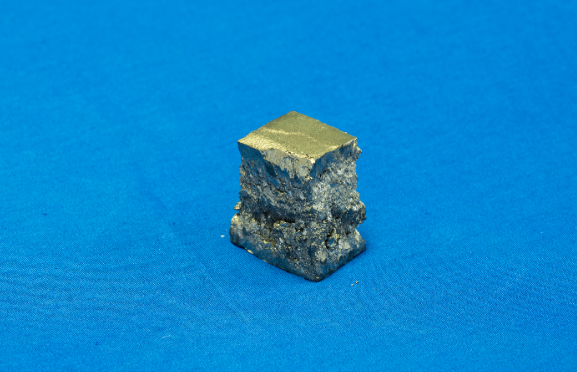I. “Rare Earth Lipstick” and the Element Cerium
The element “cerium,” with an atomic number of 58 and the symbol Ce, was discovered in Sweden in 1803, which is the most abundant rare earth element and the second rare earth element to be discovered!
Cerium resources are mainly concentrated in China and Norway and Sweden in Northern Europe. Among them, China has the highest reserves. As the most abundant rare earth element, what can cerium be used for?

II. Civilian Application of Rare Earths: Rare Earth Lipstick
Some products developed and close to people’s daily lives use the element “cerium”, one of which is the rare earth lipstick. At first glance, the rare earth lipstick may seem a bit “hardcore” since rare earth elements are metals.
On December 14, 2016, the “Catalogue of Substitutes for Toxic and Hazardous Raw Materials (Products) Encouraged by the State (2016 Edition)”, compiled by the Ministry of Industry and Information Technology, the Ministry of Science and Technology, and the Ministry of Environmental Protection jointly, clarifies the element cerium and rare earth sulfides such as “cerium sulfide” can replace lead – based and cadmium – based pigments as environmentally friendly rare earth pigments. This indicates that cerium sulfide is an environmentally friendly rare earth pigment so that it can be used as a colorant.

The colorant can be regarded as the key of lipstick. Further to explain, the rare earth lipstick uses rare earth cerium sulfide as a colorant, featuring bright colors, resistance to fading, and strong durability. Moreover, cerium sulfide is an environmentally friendly and non – toxic pigment with no side effects on the human body. Let’s look forward to the launch of the rare earth lipstick.
III. Civilian Application of Rare Earths: Rare Earth Glaze Antibacterial Ceramics
In fact, there are many series of rare earth glaze antibacterial ceramics. Researchers added cerium oxide during the ceramic manufacturing process, endowing the ceramics with antibacterial properties, which is also one of the greatest highlights of rare earth glaze ceramics.
IV. Other Uses of the Element Cerium
The applications of cerium can be divided into five major categories: applications in the glass and ceramic industry, environmental protection catalysts, lighting and display, etc.
1.Glass and Ceramic Industry
Glass Polishing and Decoloration:
Cerium – based polishing powders (such as cerium oxide) are the core polishing materials for precision optical glass (lenses, displays) and decorative glass, with high efficiency and no scratches. In glass manufacturing, cerium can also neutralize the green tint caused by iron impurities and improve transparency.
Ultraviolet Filtration and Coloring:
Cerium oxides can absorb ultraviolet rays and are used in sun – protection glass and building curtain walls. At the same time, working as stable colorants, they are used to manufacture high – temperature – resistant yellow or red ceramic glazes.
2.Environmental Protection Catalysts
Automobile Exhaust Purification:
Cerium – zirconium solid solutions are key components of three – way catalytic converters (TWC), which are capable of adjusting the air – fuel ratio through oxygen storage capacity and convert CO and NOx in exhaust gases into harmless gases.
Industrial Waste Gas Treatment:
Cerium is used in catalytic combustion devices to decompose volatile organic compounds (VOCs) and reduce pollution emissions in the chemical and printing industries.
3.Lighting and Display Technology
Phosphors and LEDs:
Cerium – activated phosphors (such as YAG:Ce³⁺) are the core materials of white – light LEDs, which are widely used in lighting and backlighting for liquid crystal displays.
Long – Persistence Luminescent Materials:
Cerium – doped aluminates/silicates can be used in luminous paints and emergency signs, with a luminescence duration of up to several hours.
4.Energy and New Materials
Hydrogen Storage Alloys:
AB₅ – type alloys enhanced with cerium (such as LaNi₅ – Ce) are applied in the negative electrodes of nickel – metal hydride batteries to improve cycle life, which are suitable for power tools and hybrid vehicles.
High – Temperature Alloy Additives:
Adding cerium to aluminum alloys can refine grains and improve heat resistance, which is used in automobile pistons and aerospace components.
Fuel Cells:
Cerium – based electrolytes (such as doped cerium oxide) conduct oxygen ions in solid oxide fuel cells (SOFC), then improving power generation efficiency at medium and lowing temperatures.
5.Agriculture and Medicine
Fertilizer and Feed Additives:
Cerium compounds can promote photosynthesis and stress resistance in crops or serve as animal growth regulators.
Medical Catalysis and Disinfection:
Cerium oxide nanoparticles are used for antibacterial wound dressings. Besides, cerium salts also work as catalysts for synthesizing pharmaceutical intermediates.
发表回复